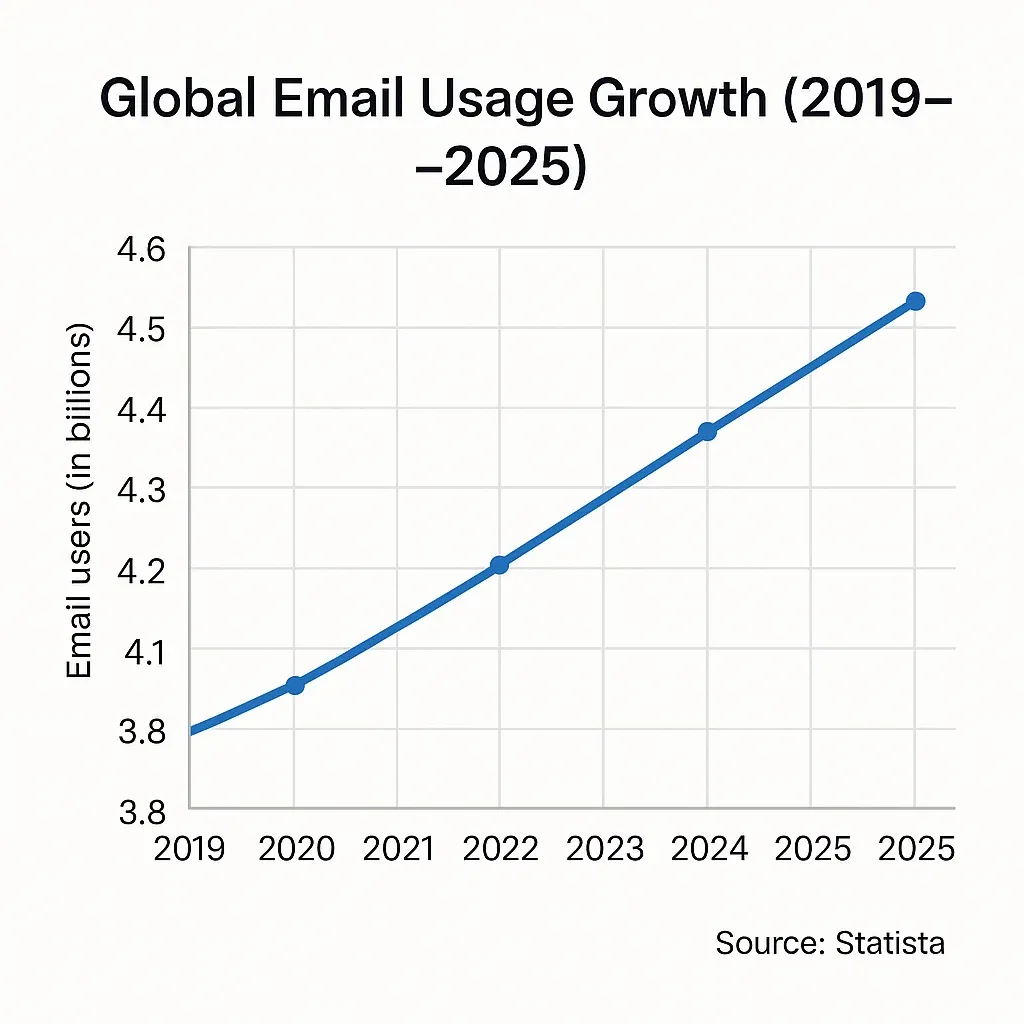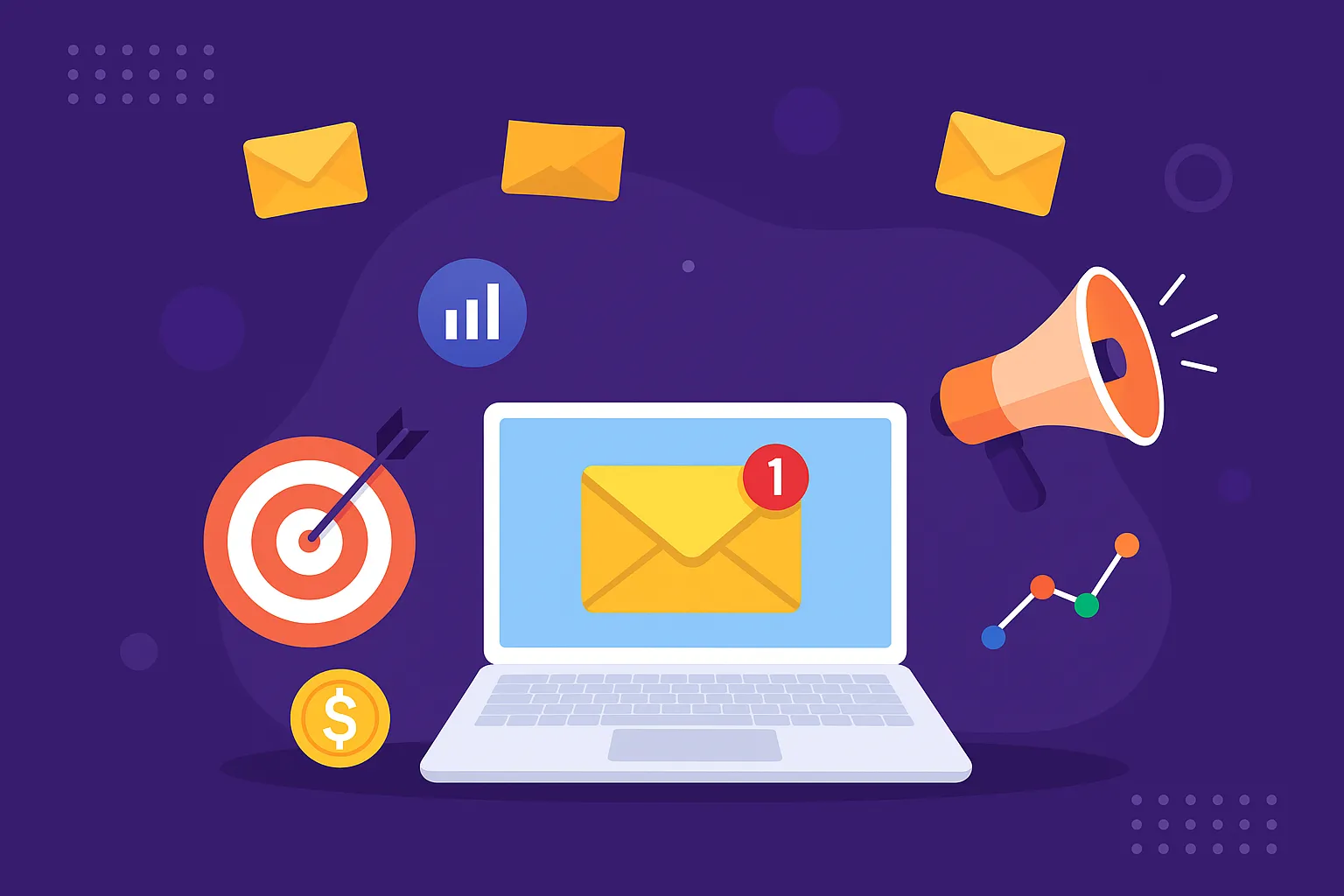Email marketing is far from outdated—in fact, it’s booming. With over 4.7 billion email users expected by 2026, startups and digital entrepreneurs are quickly realizing that email isn’t just alive—it’s evolving fast. The surge in remote work, creator-led businesses, and automation-first marketing has opened up massive opportunities in the email marketing app niche.
From AI-powered newsletters to e-commerce-focused automations, the ecosystem is brimming with gaps ready to be filled. If you’re a founder or agency looking for the next big move, launching an email marketing app in 2025 could be your golden ticket.
In this blog, we’ll break down why these apps are red-hot right now, which ideas are worth pursuing, how much it costs to launch, and how clone app development from Miracuves can save you months of time and budget.

Why Email Marketing Apps Are a Hot Opportunity in 2025
According to Statista, email marketing revenue is projected to surpass $17.9 billion by 2027, with constant annual growth. Platforms like Mailchimp, Klaviyo, and Brevo have received huge funding rounds in recent years, signaling strong investor confidence. Even newer players like beehiiv and MailerLite have attracted creator audiences and venture capital alike.
What’s driving this surge?
- Consumer demand for personalized, automated messaging
- E-commerce brands leaning heavily into lifecycle and transactional emails
- B2B marketers optimizing for high ROI channels (email has an average ROI of $42 for every $1 spent)
- AI tools enabling smarter segmentation, predictive sending, and better content personalization
Still, many niches remain underserved: solopreneurs, newsletter curators, and SMBs who want no-code tools that work.
Top Profitable Email Marketing App Ideas to Launch in 2025
1. Niche Newsletter Builder (e.g., for creators or coaches)
A no-code platform that empowers content creators to launch paid or free newsletters with ease. Includes drag-and-drop tools, template libraries, and audience segmentation. Ideal for monetizing personal brands in the booming creator economy.
Monetization: Subscription plans, premium templates, affiliate features
Why it works in 2025: The solo creator economy is booming and underserved by legacy tools.
2. AI-Powered Email Sequence Generator
This smart app uses AI to build high-converting email sequences from prompts, campaign goals, or audience behavior. Great for marketers seeking quick automation with personalized flows—no copywriting skills required.
Monetization: Pay-as-you-go, freemium with AI token packs
Why it works in 2025: Marketers want to automate faster, and AI content generation has matured.
3. Transactional Email Service for E-commerce
Designed for seamless integration with Shopify, WooCommerce, and Magento, this tool handles order confirmations, shipping updates, and upsell emails. A reliable, user-friendly alternative to traditional transactional email services.
Monetization: Usage-based pricing or SaaS tiered plans
Why it works in 2025: Every store needs transactional emails, but few want the complexity of tools like SendGrid.
4. Local Business Email CRM
A simplified email CRM tailored for local service businesses. Manage contacts, automate follow-ups, and send promotions—all without complex setups. Perfect for salons, clinics, and small retailers aiming to stay connected with their customers.
Monetization: Monthly subscription, white-label licenses for resellers
Why it works in 2025: Local businesses seek simple tools that don’t require tech-savvy teams.
5. Cold Outreach App for Sales Teams
This B2B tool helps startups and sales teams automate cold email campaigns while maintaining inbox deliverability. With tracking, A/B testing, and warm-up features, it’s built for lead generation at scale.
Monetization: Per seat pricing, plus add-ons for warm-up and analytics
Why it works in 2025: Startups and sales agencies still rely on cold outreach as a primary growth lever.
6. Drip Campaign App for Courses & Coaches
Enable course creators and coaches to automate email flows based on user actions and learning progress. From onboarding to milestone reminders, this app boosts engagement and course completion rates.
Monetization: Flat monthly plans, integrations as upsells
Why it works in 2025: Course creators want automation tailored to their students’ learning paths.
What Makes an App Profitable in the Email Marketing Niche?
The most profitable email marketing apps share four traits:
- Recurring revenue models: Monthly or usage-based billing keeps cash flow predictable
- High retention: Email tools become deeply integrated into business operations, making churn low
- Low overhead: Cloud hosting and open-source frameworks reduce maintenance costs
- Scalable acquisition: Many apps grow via affiliate marketing, agency partnerships, and freemium models
What boosts these traits even more? Clone app development.
By using a ready-made white-label clone of an email marketing platform from Miracuves, founders can bypass months of custom development and go straight to testing, acquiring users, and iterating for growth.
Cost to Build an Email Marketing App in 2025
Building an email marketing app from scratch can range widely depending on features and complexity:
- Basic MVP: $12,000 – $25,000
- Full-featured SaaS: $30,000 – $100,000+
Launch Your Own Email Marketing Platform in Just 3–6 Days — Starting from $2,000 to $2,500 with Miracuves’ Go-Live Package
Key cost drivers include:
- Frontend frameworks (React, Flutter)
- Backend logic for scheduling, delivery, segmentation
- Third-party integrations (SMTP, analytics, CRM)
- AI and automation layers
- Responsive UI/UX for mobile and desktop
Want a faster, leaner launch? Miracuves offers pre-built clone apps for popular platforms like Mailchimp and ConvertKit—fully customizable, white-label ready, and scalable from day one.
Tips for Founders to Launch a Successful Email Marketing App
- Start with an MVP: Don’t chase features—focus on solving one pain point extremely well
- Design for clarity: Clean, intuitive UI/UX increases retention and onboarding success
- Validate early: Run pre-launch landing pages, gather feedback, and test user flows
- Ensure scalability: Your backend should grow with your userbase, not crash under it
- Don’t ignore marketing: Paid acquisition, SEO, affiliate channels, and demos drive scale
Conclusion
If you’re a founder or agency looking to launch your next SaaS venture, email marketing apps offer unmatched potential in 2025. With rising demand, investor attention, and niche gaps yet to be filled, the timing couldn’t be better.
Instead of starting from scratch, consider leveraging clone app development with a trusted partner like Miracuves. Our pre-built, white-label email marketing solutions let you skip the technical debt and focus on what matters—growing users and revenue.
At Miracuves, we help innovators launch high-performance app clones that are fast, scalable, and monetization-ready. Ready to turn your idea into reality? Let’s build together.
FAQs
Q:1 How much does it cost to build an email marketing app?
The cost to build an email marketing app with Miracuves ranges from $2,000 to $2,500, with a complete Go-Live setup in just 3–6 days.
Q:2 What features should a successful email marketing app include?
Core features include drag-and-drop builder, segmentation, analytics, automations, and integrations.
Q:3 Is it better to build from scratch or use a clone solution?
Using a clone saves time, cost, and allows faster market testing—ideal for startups
Q:4 Can I white-label an email marketing app?
Yes, clone-based apps from Miracuves are fully white-label ready.
Q:5 What monetization models work best for these apps?
SaaS subscriptions, usage tiers, and affiliate-based upgrades are most common.
Q:6 Are AI features necessary in 2025?
While not mandatory, AI boosts value by improving content, segmentation, and delivery timing.
Related Articles:








